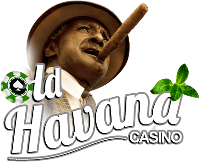Another area that the experts don't agree on is the amount of money needed for a comfortable gambling bankroll.
Once you agree to the concept that you need money set aside for gambling that is separate from the money needed to buy groceries, make the car payment or pay the rent, then you can begin to refine just what constitutes an adequate bankroll.
With the Roulette Strategy, I let the system determine the cash needs. By having a reliable system, we can determine every piece of information needed to precisely define the amount of bankroll you need for each level of play.
Not surprisingly, if you want to consistently play using green $25 chips, you need a larger bankroll that a player using red $5 chips. The grain of knowledge you need to gain at this point is that both your level of betting and the performance of the system will determine your bankroll. Once the system is explained and numerous examples are offered, this will become crystal clear to you.

The best daily bonuses on the internet
Our score:  (4.3 / 5)
(4.3 / 5)

Welcome Bonus
Our score:  (4.2 / 5)
(4.2 / 5)

Welcome Bonus
Our score:  (4.2 / 5)
(4.2 / 5)

Bonus Code: 400BONUS
Our score:  (4.2 / 5)
(4.2 / 5)

Bonus Code: 400BONUS
Our score:  (4.2 / 5)
(4.2 / 5)
Like many other situations involving money, money management often has more to do with how you budget your bankroll than simply the size of your bets. In our approach to gambling, we will set both win goals and loss limits. These are not some arbitrary amounts that are constantly subject to change dependent on your whims. The size of your bankroll will determine the amount of money you use for any given game of roulette. The amount used for a game, or your "buy-in," will determine the bets you use, the size of your bets, your loss limit for that game and your win goal as well.
For instance, if you are traveling to a casino destination for a two-day stay with a $2,000 bankroll, you can divide it into two $1,000 sessions. You could further divide each session bankroll into four $250 game bankrolls.
You might go a step further. You might decide to limit your losses to 50% of your buy-in. If you buy in for $250, then that game would be over whenever you are down by $125.
Likewise, you might set a winning goal of $100 per game. As soon as you hit this target amount, you could quit playing or at least become more conservative so that you don't lose your winnings back to the casino.
One way to lock up profits is to physically remove them from play. Let's say you just won $100 on a $250 buy-in. You can take this $350 and put it away. The casino's safe deposit box is a convenient place to keep winnings. Some players even bring envelopes for this purpose. When they reach their winning goal, they slip the cash into an envelope and mail it home.
If you can't afford a $2,000 bankroll, you can use a similar formula geared to the size of your gambling bankroll.
Also, please remember that when you win you are not playing with the "casino's money." It is only the casino's money when it is sitting in the chip rack on the roulette table. Once the money reaches your side of the table, it is yours, not the casino's. If you continue to think of it as the casino's money there is a good chance it will make a round trip and end up back on the casino's side of the table.
If you hit your loss limit, you take a walk. There's no point in setting loss limits unless you have the guts to stick to them. Walking away from a loss takes a lot of discipline. Most people won't do it if they still have money on the table. They will wait until every chip is gone, and even then, many will reach for more money rather than accepting a loss and walking away.
Whatever you do, leave the table following a loss. You can sit in the lounge. Or take a walk around the casino. I find that doing something physical works well for me. A brisk 30-minute walk is highly recommended.
The one thing you don’t want to do after a loss is reach for more money and continue playing.